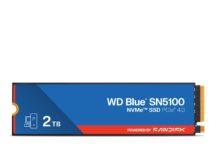🌿 Ruzu Non-Alcoholic Herbal Bitters
Ruzu Non-Alcoholic Herbal Bitters is a natural health supplement specially formulated to:
- ✅ Promote general wellness
- ✅ Detoxify the body
- ✅ Support the treatment of various ailments
Made from a powerful blend of 100% organic and medicinal herbs, Ruzu is completely alcohol-free, making it ideal for:
- 👪 All age groups
- 🌱 Health-conscious individuals
- 🌿 Anyone seeking non-alcoholic herbal remedies
Whether you're looking to boost your vitality, cleanse your system, or support healing the natural way, Ruzu Bitters offers a trusted herbal solution.
Three Data Storage Considerations to Enable Smart Stadiums
By Ghassan Azzi, Sales Director, Africa at Western Digital

There’s a close play at second base. A slow-motion video replay appears on the scoreboard. The moment in question approaches, and the video pauses and then zooms in on an image of the runner’s foot touching the bag a split second before the ball arrives. The view rotates 90 degrees, providing another angle that confirms the call. The home crowd cheers as the umpires convene and uphold the play.
Meanwhile, up in a command center next to the press box, a team watches a bank of video monitors streaming live footage from hundreds of security cameras situated around the facility. Analytics pop up on screen, classifying spectators as they move around the concourse. Dozens of feeds are rotated in and out of the monitors, based on current events and potential issues, identifying suspicious behavior that may need to be escalated to a human.
Powering this smart stadium is a mini data center positioned inside the stadium. Racks of servers, storage drives and networking equipment line the room, emanating a low hum as they collect and process terabytes of video data. This data is then fed into powerful AI-powered applications that the scoreboard operator, security personnel and other teams stationed around the stadium use to improve the spectator experience.
Whether capturing the play on the field or ensuring the safety of spectators and employees, AI-enabled video analytics are a big part of the spectator experience at large events. Providing the foundation for these powerful video analytics applications is high-capacity storage, an important component in the AI data cycle. Architects of the smart stadium need to ensure these high-performing video streaming, AI applications have the capacity, performance and security needed to enable modern, advanced event arenas.
The Importance of Storage in the Smart Stadium
Video is one of the fastest growing data storage segments. Video analysis tools process and analyze video data to extract insights and help make data-informed decisions. This is especially true in the large event space industry. Whether it’s a professional sports playoff game or a massive outdoor concert with hundreds of thousands of attendees, smart video enhances the customer experience and enables essential security for spectators, performers and employees. However, the video data needs to be reliable and accessible for these applications – and that can’t happen if it is not stored properly.
Higher video resolutions, increased frame rates and metadata allow analysts to evaluate video and images in greater detail, pixel by pixel, versus analyzing a whole image. This smart video data requires a massive amount of capacity, but organizations can’t procure just any storage drive and call it a day. Smart video analytics require the right type of storage to really bring data to life. Factors such as higher resolutions, multiple streams, AI metadata and even longer retention times also have a direct impact on data movement and data storage. All of this is driving the need for increased capacity, performance and durability to support streaming workloads for smart video systems and deep learning-enabled storage servers with advanced video AI analytics. .
Storage Requirements for High-Performing Video Analytics
Storage optimized for smart video analytics differs from client or desktop hard disk drives (HDDs). They are engineered to support multiple video streams, enable heavy “write” workloads and feature firmware that reduces image loss or dropped frames. There are various storage options for smart video to accommodate these diverse requirements – including removable cards for cameras, large-capacity enterprise-class HDDs, high-performing solid-state drives (SSDs), and high endurance microSD™ cards – and each has their place and specific use case in the smart stadium, and in smart video in general.
In addition, on-drive intelligence allows high-capacity smart video HDDs to recognize incoming video stream metadata and data types, coalesce data together in a cache and place data in specific track locations on-disk for optimal performance. Other drives can provide a variety of storage device parametric operational and diagnostic data to the system, alerting system administrators of specific recommended actions to address potential issues.
Read Also:Western Digital Showcases World’s Highest Capacity 2.5” Portable HDD and Other Innovative Storage Solutions at GITEX Africa 2024
Enabling the Smart Stadium
Sports, entertainment and other large events are all about delivering a powerful spectator experience. Video analytics are a big part of this experience, providing high-definition video streams, stats and other entertaining highlights to fans while ensuring attendees, performers and employees are safe. The storage requirements vary widely across these stadiums use cases, making it essential for organizations to build a smart storage environment made up of both high-capacity and high-performing HDD and Flash solutions in the data center and out on the edge. The next close play at the plate, the viewing experience of a spectator in the back row and the security of everyone inside the facility, are all dependent on the need for storage.
















